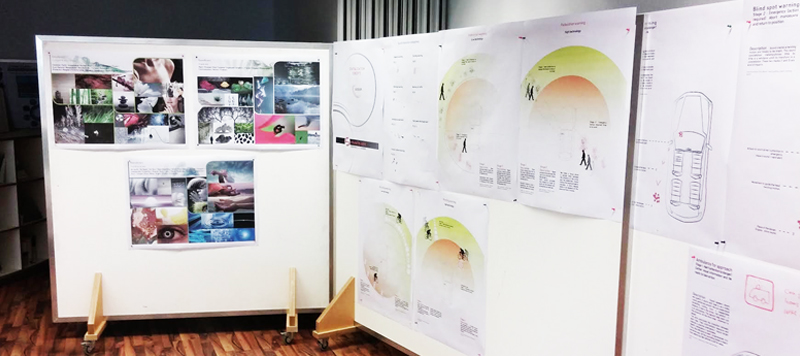Can we say that sound design is a marketing strategy tool?
Absolutely. A simple, effective example.
When you're on the street, you hear that very specific 'ding', like the tapping of a metal rod on a glass. A good part of the population will recognize it, will know that the person you have just met has received a message or a notification. You will even know that this person has an iPhone (iPhone = Apple = Brand Identity…) We come full circle. Only one sound makes it possible to understand, it is the ergonomic aspect.
It underlines the identity of a brand and registers the user in an ecosystem of products linked to this same brand.
If we are proud of a product, of owning it, the sounds that this product emits are a signature that we share with other users. It's a real marketing strategy.

How can sound design add real value to a brand's DNA?
We live in a society saturated with visual information. From advertisements in the street to those on television. We must work on multimodal information to create stronger links with the consumer, that it has benchmarks. The DNA of a brand can be defined by its logo, its graphic universe, its products, its values. But we are also working, in particular thanks to our academic partners, on the development of brand DNA, multisensory. The goal is to create a global experience, to stimulate emotions and sensations on different levels, so that a brand becomes a sort of "madeleine of Proust".
Isn't the concept of sound design a way of surfing the trend of connected objects?
For this area specifically, sound design is in my opinion THE answer for connected objects. That is to say that we are dematerializing our daily lives, we are requesting additional services from small objects which ultimately must most of the time be connected to a smartphone.
Very few companies ask themselves the question of a sound language when well-studied sounds could allow an immediate understanding of an interaction, without going through a remote screen most of the time, with an expensive application in development. and sometimes difficult to understand.
On the contrary, I think that sound design, through its transversal capacity to give meaning and values, is very useful in this area.
In which sector of activity is sound design most present? New technologies ? The automobile?
The car has issues that somehow require the development of specific sounds. This is the case of electric cars, which, by their silence below a certain speed, are dangerous for pedestrians. So you have to add a sound to these cars. But not just any sound. It must be alerting, but not too much, pleasant, beautiful, identifying. It's a rather complicated specification...
Connected vehicles are also in demand the more functions there are, the more our ability to understand will be strained. By its capacity to strike the attention more quickly, the sound will be more widely used in these specific contexts. Moreover, a sound event can also be understood in its movement. That is to say that we are working in particular on HMIs capable of giving, through texture and structure, specific information; then by moving the sound in space, its spatialization, we can deliver another level of information, on the direction of a danger for example.
New technologies often lead to new problems. We are constantly on the lookout to anticipate these problems that often our customers had not identified.
These are problems in architecture, sound signage, in the medical world, in virtual reality, aeronautics, etc. In short, there is everything to be done.
Carine Renaud, UX-Evangelist @CarineWhatElse - UXLab Foundation @UX-Republic
UX/UI ECO-DESIGN # Paris
SMILE Paris
163 quay of Doctor Dervaux 92600 Asnières-sur-Seine
DESIGN THINKING: CREATING INNOVATION # Belgium
UX-REPUBLIC Belgium
12 avenue de Broqueville - 1150 Woluwe-Saint-Pierre
MANAGING AND MEASURING UX # Paris
SMILE Paris
163 quay of Doctor Dervaux 92600 Asnières-sur-Seine
DESIGN SPRINT: INITIATION & FACILITATION # Paris
SMILE Paris
163 quay of Doctor Dervaux 92600 Asnières-sur-Seine
UX-DESIGN: THE FUNDAMENTALS # Belgium
UX-REPUBLIC Belgium
12 avenue de Broqueville - 1150 Woluwe-Saint-Pierre
GOOGLE ANALYTICS 4 #Paris
SMILE Paris
163 quay of Doctor Dervaux 92600 Asnières-sur-Seine
ACCESSIBLE UX/UI DESIGN # Belgium
UX-REPUBLIC Belgium
12 avenue de Broqueville - 1150 Woluwe-Saint-Pierre
EXPERIENCE MAPPING # Paris
SMILE Paris
163 quay of Doctor Dervaux 92600 Asnières-sur-Seine
USER RESEARCH: LEARNING FROM USERS # Belgium
UX-REPUBLIC Belgium
12 avenue de Broqueville - 1150 Woluwe-Saint-Pierre












